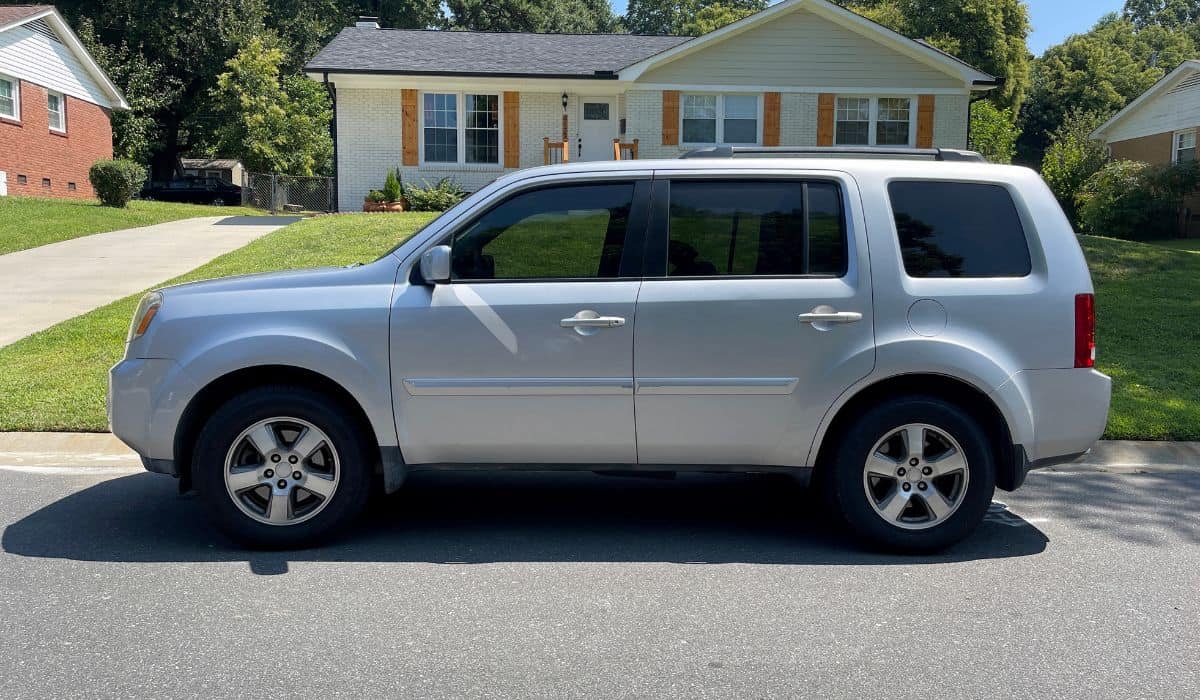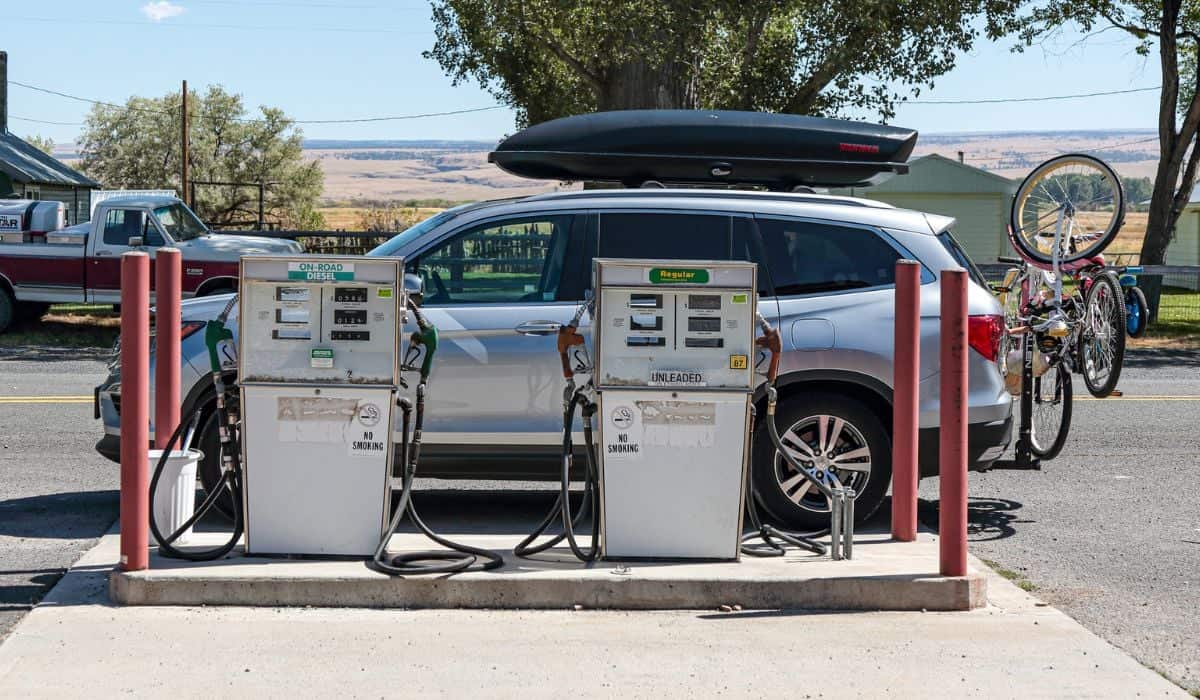What’s Wrong With The Honda Pilot?
The Honda Pilot is a family-friendly SUV with a spacious interior, a high towing capacity of 5,000 lbs, and excellent fuel economy. However, the Pilot is notorious for issues in the 2003 model that have plagued the name ever since.
The Honda Pilot is prone to oil leaks, engine issues, transmission failure, faulty ignition switches, and chipping paint. Most of these issues were found in the 2003 Pilot, and newer models have made improvements. Avoid Honda Pilots from 2003, 2004, 2005, and 2019.
There’s a lot to consider when selecting a new or used vehicle, especially if you’re looking at a Honda Pilot. Let’s take a closer look at the Pilot’s primary issues and which model years to steer clear of, so that you can decide if this car is right for you.
What Are the Most Common Issues With a Honda Pilot?

Although the Honda Pilot is a spacious, family-friendly SUV, it isn’t free from mechanical problems. Some common issues with the Pilot include oil leaks, ignition problems, transmission failure, and chipping paint.
Some models and generations have more problems than others, so your mileage may vary. Let’s go through some common issues with the Honda Pilot in more detail.
Oil Leaks
Oil leaks can happen to any vehicle, but Honda engines might be more prone to issues. Honda engines have a porous engine block that can lead to leaky oil. The 2003 Honda Pilot is one of the most affected models, with several owners claiming leaky oil.
Although Honda has reimbursed some owners’ maintenance bills, if your model isn’t under warranty, you’ll have to pay repair fees out of pocket. That said, newer Honda Pilot models after 2003 are less prone to oil leaks.
Engine Issues
The Honda Pilot isn’t free from engine issues either. Some common problems include rough starts, vibration, and reduced engine performance. Most of these issues stem from a faulty EGR valve.
The EGR valve is in place to control the flow of exhaust and connects the exhaust manifold to the intake manifold.
The EGR valve on the Honda Pilot frequently fails, which leads to a check engine light on the dashboard. Once the EGR valve fails, more engine issues are likely on the horizon. Cleaning the valve can lead to temporary relief in performance, but it isn’t a long-term solution because problems tend to reoccur.
Unfortunately, the EGR valve on the Honda Pilot has to be completely replaced once issues like rough starts and vibration start.
Ignition Switch Problems
The Honda Pilot also encounters ignition switch issues from time to time. Some owners found that they couldn’t insert their keys or that the keys became loose while the vehicle was running. In some instances, owners can’t start their Honda Pilot at all.
Unfortunately, Honda hasn’t officially recognized the ignition switch issue, and it’s unlikely to be covered under warranty. Repairs and solutions cost anywhere between $500 to $1,000 since you have to completely rebuild the ignition.
Furthermore, some owners rebuilt the ignition switch only to have the problem happen again. Luckily, these issues don’t affect every owner and tend to happen in 2003 Honda Pilot models. One solution some owners use is to install automatic starters or aftermarket ignition switches.
Transmission Failure
The 2003 Honda Pilot is notorious for issues, including significant transmission problems that lead to expensive repairs.
Honda issued a recall in 2004 for the 2003 Honda Pilot, claiming a potential heat buildup between the countershaft and secondary gears in the automatic transmission. Higher mileage models are at risk of gear tooth chipping or breakage.
It’s crucial to check if your 2003 Honda Pilot is covered by the recall if you encounter transmission problems or complete failure. Transmission failure is a dangerous problem that isn’t cheap to resolve.
Failing Low Beams
Although a small issue in comparison to some of the others we’ve described, many Honda Pilot owners have reported failing low beams, meaning they have to use their high beams even when they’re not appropriate.
Low beam failure is a common problem in the Honda Pilot due to the wiring in the headlights. The Pilot’s headlight harness can overheat, which harms the wiring over time.
Once the headlight beams have failed, you’ll have to replace the wires alongside the light/turn signal button and combination switch connector. Unfortunately, the headlight harness is a complex fix, and replacing these parts is a job meant for a professional mechanic.
Chipped Paint
Paint chipping might seem completely aesthetic, but it can be a frustrating experience for vehicle owners. Unfortunately, this issue isn’t exclusive to Pilot models and affects most Honda cars.
Some owners report tiny splotches of discoloration and lighter spots of paint. Over time, these small spots multiply and expand, resulting in large areas of chipping and peeling paint.
The problem is most likely caused by cheap or faulty materials in the paint and clear coat. Honda hasn’t made any official statements other than advising owners to protect their vehicles from sun exposure.
As you can imagine, this advice isn’t that useful for most commuters and vehicle owners. Furthermore, repainting a vehicle can be an expensive solution and may not be worth it to most owners.
If you do decide to repaint, it might be wise to find aftermarket paint instead of returning to the dealership for the original manufacturer’s product.
Rough Suspension
The Honda Pilot can also encounter worn-out suspension, which causes problems and difficult steering. The problem is typically caused by the links on the stabilizer bar wearing out over time.
Once the links on the two stabilizer bars are worn out, the Honda Pilot will become difficult to turn, and you might notice a banging sound near the front suspension.
Luckily, you can replace the stabilizer bar links that attach the stabilizer bars to the suspension. Higher-quality aftermarket components are also available and can help prevent the problem from happening again.
What Are the Best and Worst Years for a Honda Pilot?

As we mentioned earlier, the Honda Pilot had an incredibly rough start with the 2003 model, and the notoriety has stuck with the model name for quite some time. Some Pilot models are much more reliable, while others aren’t worth the investment.
Here are a few of the best and worst model years for the Honda Pilot.
The Best Pilots
The 2020 and 2021 Honda Pilot
The 2021 Honda Pilot included a 9-speed automatic transmission that improved on the previous 6-speed automatic transmission. The model also improved other features, like automatic start and stop technologies. The 2021 Pilot featured paddle shifters, dual-zone climate systems, and new trim options.
Although the 2020 Pilot didn’t have major improvements, the Black Edition model included new features. The Black Edition trim included all-wheel drive and a blacked-out exterior, which were nice editions.
Finally, the V6 engine provided commuters with more efficiency than the 2019 Pilot, which had several engine complaints.
The 2022 Honda Pilot
The 2022 Honda Pilot includes several new features that make it a better vehicle than previous iterations. Some new features include an 8-inch touchscreen display, full LED handlamps, and Apple and Android compatibility.
The 2022 Honda Pilot also comes in unique trims, like TrailSport and Sport, with several features and durability improvements. Finally, the model has more space, making it an appropriate SUV for larger families.
Pilots to Avoid
The 2003 Honda Pilot
The 2003 Honda Pilot was prone to several issues, including powertrain problems that caused the engine to misfire. This issue leads to safety risks that can harm drivers’ lives while commuting. The 2003 Pilot also encountered transmission failure and noisy torque converters, which aren’t cheap problems to fix.
The 2004 Honda Pilot
The 2004 model also encountered significant issues with the transmission torque converter around 100,000 miles. The only consistent solution was a transmission replacement, which is an expensive solution. The 2004 Honda Pilot also had problems with transmission shudders, ignition switches, and other mechanical flaws.
The 2019 Honda Pilot
The 2019 Honda Pilot faced issues with the engine, and owners have reported problems with starting the vehicle after stopping. The auto-engine turn-off feature in the 2019 Pilot wouldn’t restart the engine, causing the transmission to jerk.
Other minor issues with the 2019 Honda Pilot were faulty radio screens and freezing infotainment systems.
Are Honda Pilots a Reliable Car Overall?
Although the Honda Pilot has a poor reputation, it’s still a spacious, capable, and appealing vehicle that can tow up to 5,000 lbs. The Pilot is a multi-purpose SUV that’s suited for families who want to commute in comfort.
Most of the known issues with the Pilot, including engine wiring, transmission failure, and chipped paint, are most common in the 2003 model.
Other models have their own share of problems, but they aren’t as significant as those found with the 2003 Honda Pilot. If you’re seeking a family-friendly SUV with lots of cargo space, excellent fuel economy, and a spacious interior, then the Honda Pilot might suit your needs.
